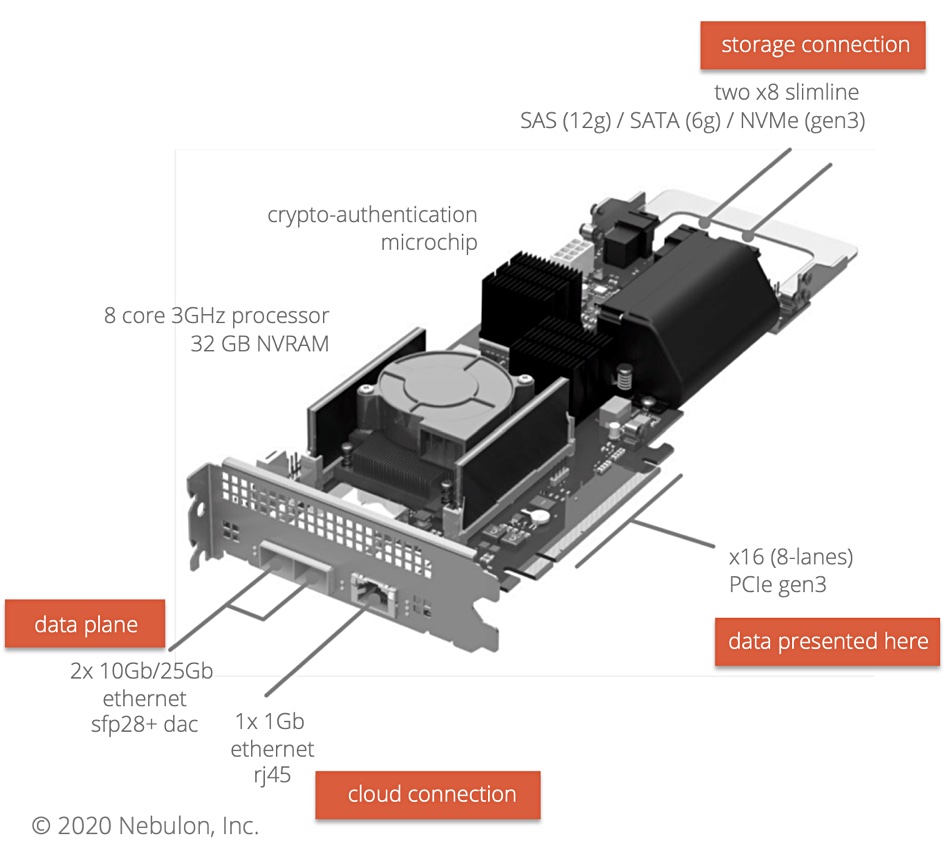Nebulon originally developed a server add-in card called a Storage Processing Unit (SPU) which provided storage and other infrastructure management functions to a server, offloading its x86 processors. The SPU, which is managed over the public Nebulon ON cloud, became a Service Processing Unit and formed part of what Nebulon calls its smartInfrastructure. It has expanded to become a server setup and management tool with smartEdge and smartCore offerings.
David Vellante, chief analyst at Wikibon, said “The cloud is extending on-premises to both enterprise and edge datacentres. Nebulon’s two-server edge solution leverages public cloud infrastructure combined with the company’s innovative API-centric management and automation, making it an ideal solution for organisations that want a modern, cloud-simple experience for edge datacentres.”
Telcos with 5G towers, retailers, warehouses, medical clinics and cloud service providers with edge services are driving a trend for more than 50 per cent of enterprise-managed data to be created and processed outside the datacentre or cloud by 2025. This will include having high-availability servers at distributed edge sites with restricted physical space.
Such servers can be simple-to-deploy hyperconverged infrastructure (HCI) servers with three nodes. Three, so that one can function as a so-called quorum witness if there is a networking problem and the other servers become disconnected from each other while still being operational — the so-called split-brain problem. The quorum witness listens and responds to pings from the other servers, decides which one is correct and declares that it is the correct server for that edge site. Only that server can then write to shared storage.

However, in space- and cost-restricted edge servers, having an actual physical third server present is not desirable. Craig Nunes, a Nebulon co-founder and COO, told us Nutanix “has the user put a quorum witness in a VM, and hosted on a different server from the two cluster nodes,” possibly outside the edge site. That needs a network switch added to the edge site system. He said VMware has a public cloud-based quorum witness and the user has to manage and maintain this. At scale, with hundreds or even thousands of edge servers to install, these alternatives become unwieldy.

Nebulon has gone a few steps further and has its Nebulon ON facility provide quorum witness functionality across all of a customer’s edge sites, and have it set up automatically. The SPUs function as edge server setup infrastructure cards and don’t need a separate network switch — saving rack real estate, power and cost. By providing the quorum witness as a service in Nebulon ON, administrative tasks related to hosting and maintaining the quorum witness are eliminated. Server and software licence costs can also be eliminated.
Further, as Nunes explained, “the card offloads the data services work from the server CPUs. Generally, we’re going to be able to handle more VMs than an equivalent HCI config.”
Nebulon says its switchless, two-node edge system is an affordable high-availability alternative for enterprises looking to stretch a cluster across two racks for protection against partner node, power and top-of-rack (ToR) switch failures. Servers and the Nebulon SPUs are shipped to edge sites, installed, switched on, and then the SPUs set up the servers and the high-availability configuration with quorum witness functionality automatically. Its a ship, switch-on and manage-through-the-cloud system that scales readily to hundreds and thousands of servers.
Nebulon co-founder and CEO Siamak Nazari said “two-node cluster support is a requisite piece in Nebulon’s evolution toward developing the ultimate cloud-managed, on-premises infrastructure solution, ideal for both edge deployments and also datacentre projects, whether they be small or large.” Clearly Nebulon wants to move inwards from any edge site beach head.








